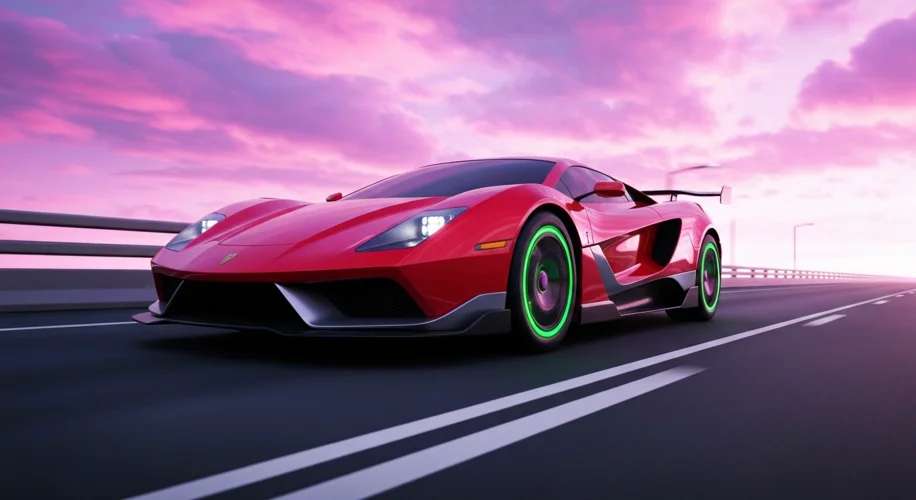Hey everyone! Mateo here. So, you’ve snagged the shiny new Quest 3, ready to dive into some serious PC VR action. Awesome! But maybe things aren’t running as smoothly as you’d hoped, especially if you’re rocking an AMD GPU. Trust me, I’ve been there. As someone who practically lives in the computer engineering world and loves getting my hands on the latest tech, I’ve spent a ton of time wrangling PC VR setups.
Today, let’s talk about some of the technical hurdles we run into and how to smooth them out, particularly for Quest 3 users with AMD hardware.
The Challenge: Why Your PC VR Might Stutter
PC VR is amazing because it leverages the raw power of your desktop or laptop. But it’s also a balancing act. Your headset needs to communicate with your PC, render complex scenes, and then send that all back to your headset. If any part of that chain gets bogged down, you feel it – maybe as stuttering, dropped frames, or even that dreaded motion sickness.
With the Quest 3, a lot of people are pairing it with more recent AMD GPUs. While AMD has made huge strides, there can sometimes be specific driver optimizations or settings that need a little tweaking for optimal VR performance compared to what some might be used to with other brands.
Cracking the Code: Troubleshooting Tips
Okay, so hear me out, these are the things that have genuinely made a difference for me and others I’ve chatted with:
- Update Everything (Seriously): This sounds basic, but it’s critical. Make sure your Quest 3 firmware is up-to-date. Then, head over to AMD’s website and download the latest Adrenalin drivers. Don’t just rely on Windows Update for this; go direct to the source.
- Quest Link Settings: When you connect your Quest 3 to your PC, you’ll use the Oculus or Meta Quest software. Inside that, there’s a graphics preference setting. For AMD GPUs, I’ve found that sometimes setting the rendering resolution slightly lower than the absolute maximum can significantly improve performance without a noticeable visual downgrade.
- AMD Adrenalin Software Tweaks: This is where a lot of the magic happens for AMD users.
- Global Graphics Settings: Navigate to the ‘Gaming’ tab in Adrenalin. You can set default profiles here. Look for VR-specific settings if available, or just ensure things like Radeon Anti-Lag are ON and Radeon Boost is OFF (or experiment with it OFF first). Power tuning can also be important; sometimes setting it to ‘Performance’ can help.
- Texture Filtering Quality: In the same section, you can often find ‘Texture Filtering Quality.’ Dropping this from ‘High’ to ‘Quality’ or ‘Performance’ can sometimes free up a surprising amount of GPU power.
- Shader Cache: Ensure your Shader Cache is enabled. This helps games load faster and can reduce stuttering.
- Disable Unnecessary Background Apps: Before you jump into VR, close down anything on your PC you don’t need. Browsers with a million tabs, download managers, or even chat apps can hog valuable CPU and RAM resources that your VR experience desperately needs.
- Virtual Desktop or Air Link: If you’re going wireless (and who isn’t these days?), network performance is key. Ensure you’re using a 5GHz Wi-Fi connection, ideally with your PC connected directly to the router via Ethernet. For Virtual Desktop, experiment with the streaming resolution and bitrate settings. Lowering them slightly can make a huge difference if your Wi-Fi isn’t top-tier.
- Overclocking (Use with Caution): If you’re comfortable, a slight overclock on your GPU core clock and memory clock can provide a nice boost. But be careful; monitor your temperatures, and don’t push it too far. Stability is more important than a few extra frames.
The Takeaway
Getting PC VR to run like a dream on new hardware can take a little tinkering. It’s not always plug-and-play, but that’s part of the fun for us tech enthusiasts! By understanding how your system components interact and by making a few smart adjustments in your software, you can unlock that buttery-smooth VR experience you’re looking for with your Quest 3 and AMD GPU.
What are your go-to tips for optimizing PC VR performance? Drop them in the comments below!

